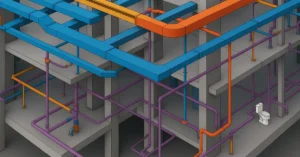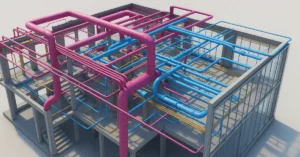
The Synergy Between Architecture and Civil Engineering: Collaborations to Watch
In the intricate dance of urban development, the synergy between architecture and civil engineering has emerged as a linchpin, weaving together innovation, functionality, and sustainability. As we step into 2024, this collaboration takes center stage, offering a promising landscape of transdisciplinary partnerships and technological integrations poised to reshape our built environment. Let’s delve into the key areas driving this transformative synergy and the collaborations set to define the architectural and civil engineering landscape in the coming year.
Transdisciplinary Collaboration: A New Paradigm Emerges
At the heart of this synergy lies transdisciplinary collaboration, a dynamic fusion of architecture, urbanism, and civil engineering. Research in this domain underscores the pivotal role of transdisciplinarity in tackling contemporary societal challenges. By melding systems engineering with complex system studies, scholars are unraveling the intricate tapestry of socio-technical systems, offering insights that transcend traditional disciplinary boundaries.
This approach illuminates the intersections of technology design, urban planning, and sustainability, revealing the political and social underpinnings embedded within. In 2024, expect to witness an accelerated adoption of transdisciplinary methodologies, as architects, urban planners, and civil engineers join forces to craft holistic solutions that address the multifaceted needs of our cities.
Interplay of Roles: Orchestrating Collaboration in Construction
In the realm of construction, collaboration is not merely a buzzword but a fundamental ethos driving project success. Civil engineers, architects, and contractors stand as the vanguards of this collaborative endeavor, each wielding their expertise to orchestrate the symphony of construction.
A civil engineer’s domain encompasses the meticulous design and oversight of infrastructure projects, ensuring they stand as bastions of safety, sustainability, and quality. Conversely, architects infuse structures with aesthetic allure, functional prowess, and spatial harmony, breathing life into blueprints and renderings. Meanwhile, contractors navigate the labyrinth of construction, marshaling resources and labor to materialize the envisioned edifices.
Collaboration: Nurturing Synergy Through Communication and Innovation
Successful collaboration hinges on a delicate alchemy of understanding, communication, and innovation. Teams must cultivate an intimate grasp of each other’s roles, fostering an environment where ideas flow freely, conflicts are resolved constructively, and innovation thrives.
In the crucible of collaboration, architects and civil engineers forge a symbiotic partnership, seamlessly integrating structural imperatives with design aspirations. Regular exchanges of ideas, updates, and feedback form the lifeblood of collaboration, propelling projects towards fruition amidst the ebbs and flows of the construction process.
Embracing Technology: Catalysts of Collaboration and Innovation
As the digital tide surges, the construction industry is embracing technology as a catalyst for collaboration and innovation. Digital tools and platforms are revolutionizing project management, enabling real-time communication, task coordination, and resource allocation.
In 2024, expect to witness a proliferation of Building Information Modeling (BIM), Augmented Reality (AR), and Virtual Reality (VR) technologies, empowering stakeholders to visualize, simulate, and iterate on design concepts with unprecedented fidelity. These technological marvels are not mere novelties but potent instruments that amplify collaboration, accelerate decision-making, and imbue projects with newfound efficiencies.
Conclusion: The Future Beckons: Towards a Collaborative and Sustainable Tomorrow
As we traverse the threshold of 2024, the synergy between architecture and civil engineering beckons us towards a future where collaboration knows no bounds, and innovation knows no limits. Transdisciplinary partnerships will chart new frontiers, unraveling the complexities of urbanization, climate change, and societal equity.
Together, architects and civil engineers will sculpt a built environment that transcends function to embody the aspirations of humanity—a testament to the transformative power of collaboration in shaping a sustainable tomorrow. So, let us embrace this journey with open minds and steadfast resolve, for the future of architecture and civil engineering is not merely a destination but a shared odyssey towards a brighter, more resilient world.
If you’re interested in learning more about architecture firms in Europe, check out this comprehensive list of the top 50 firms compiled by Archgyan. From innovative startups to long-established industry leaders, this list has it all. Take a look and discover some of the most inspiring and influential architecture firms in Europe today.
If you’re interested in architecture and want to learn more about this amazing field, subscribe to our podcast on youtube
For more SketchUp tutorials, head to https://www.sketchupguru.com










